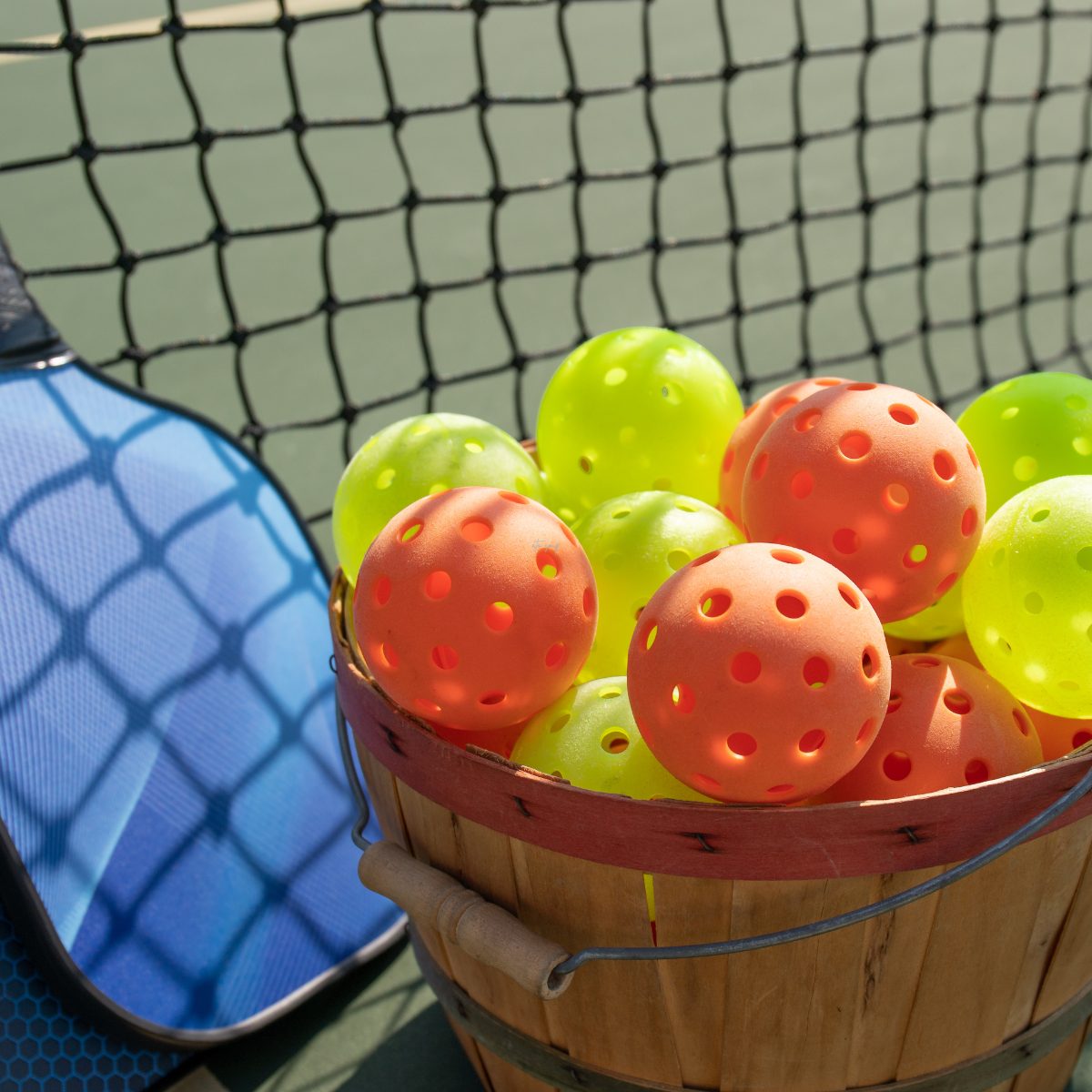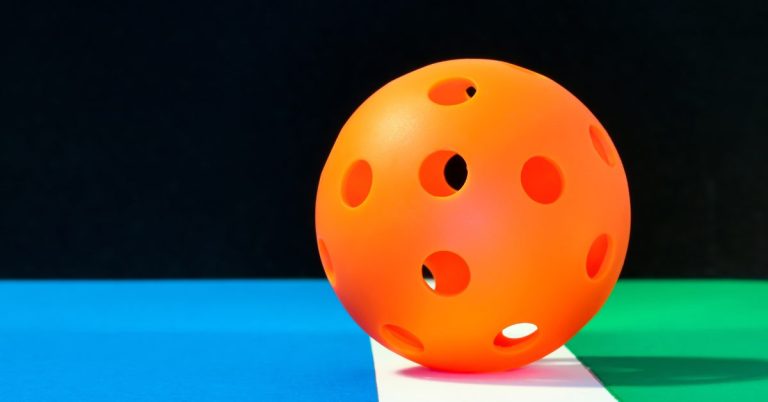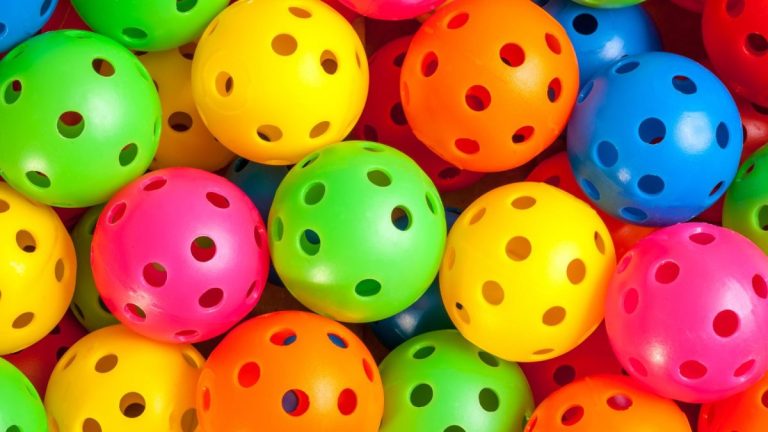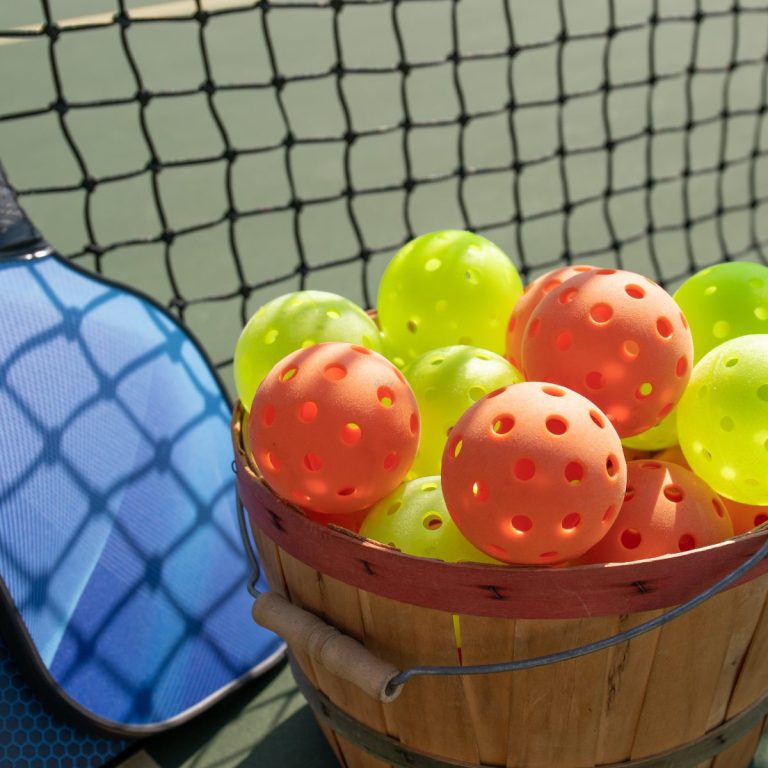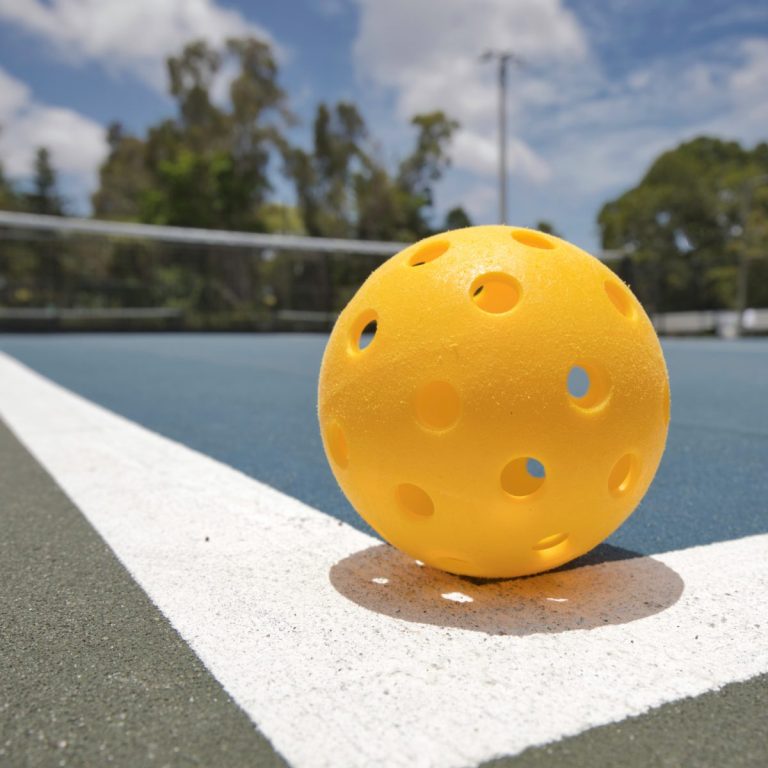Pickleball Rules & Regulations: A Guide to Playing the Game
Pickleball is a popular sport that has been gaining attention in recent years. Players use a paddle and a plastic ball with holes, combining tennis, badminton, and ping pong. Learning pickleball is easy and fun, but, like any sport, players must follow specific rules. Pickleball Rule & Regulations: A Guide to Playing the Game will give you a firm foundation for playing the game by the rules set forth by the governing body.
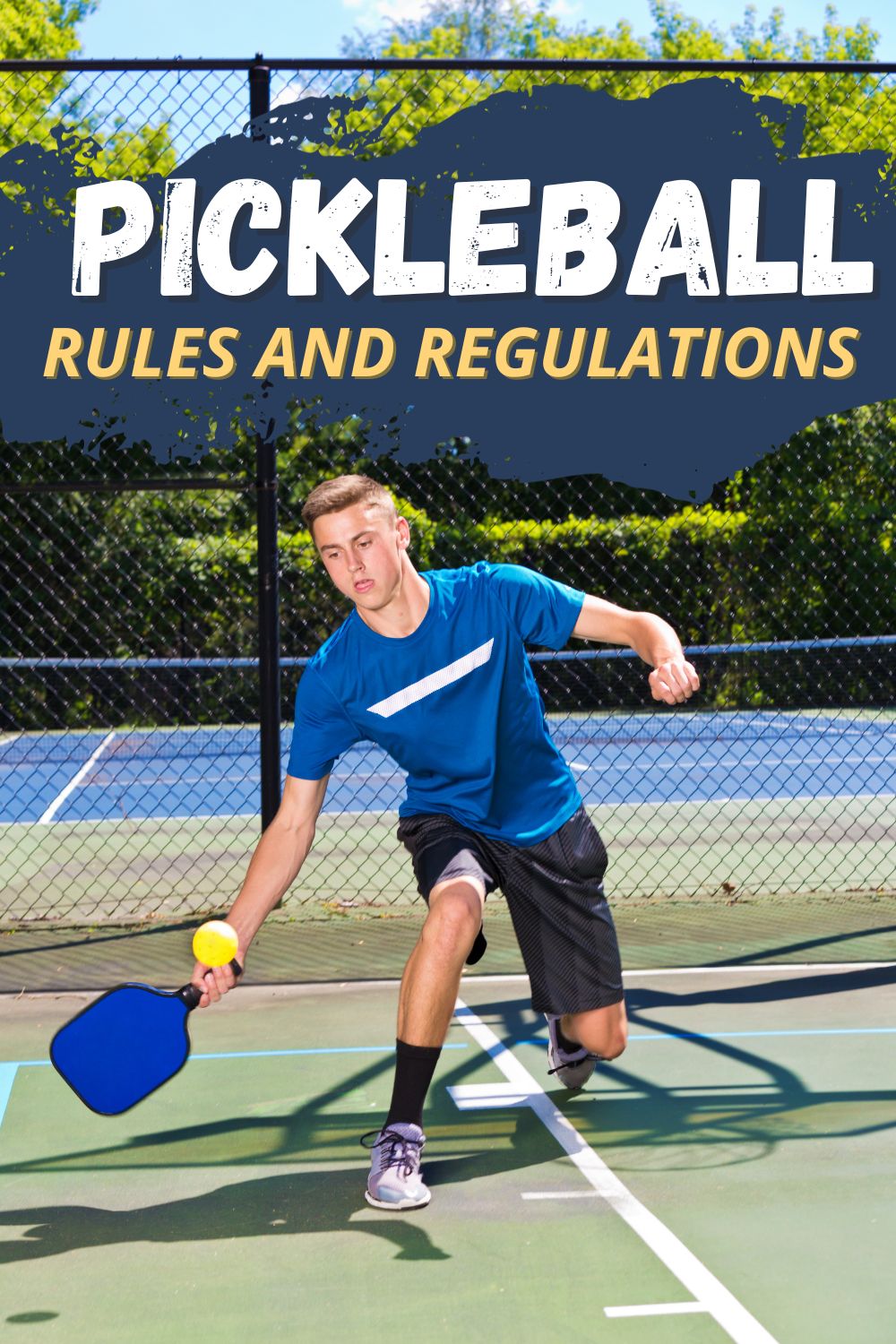
In 2022, the USA Pickleball Association (USAPA) released an updated version of the official rulebook for pickleball. These rules specify the court size and the permissible ball type. Players must understand pickleball rules to play the game correctly and avoid penalties.
Some of the critical rules in pickleball include the two-bounce rule, which states that the ball must bounce once on each side of the net before a player can hit it in the air, and the non-volley zone rule, which prohibits players from hitting the ball while standing inside the non-volley zone. By following these rules, players can ensure a fair and enjoyable game of pickleball.
Understanding Pickleball
History and Evolution
Pickleball is a paddle sport that combines elements of tennis, badminton, and table tennis. Joel Pritchard, Bill Bell, and Barney McCallum invented pickleball in 1965 while seeking a way to entertain their families during a summer weekend on Bainbridge Island, Washington. They created the game using a plastic ball and wooden paddles, and it quickly became popular in the local community.
Over time, the game evolved to include more rules and equipment. The International Federation of Pickleball (IFP) established the sport’s oversight and global growth in 2022. Now, people of all ages and skill levels worldwide play pickleball, with various tournaments and leagues at recreational and competitive levels.
Pickleball vs. Other Racket Sports
While pickleball shares similarities with other racket sports, such as tennis and badminton, it has unique rules and gameplay. Pickleball’s smaller court distinguishes it, making it easier for beginners to learn and play. The ball used in pickleball is also lighter and travels slower than a tennis ball, requiring less physical effort and allowing for longer rallies.
Another key difference is using a non-volley zone known as the “kitchen.” Players cannot hit the ball while standing inside this area near the net unless it bounces first. This rule prevents players from dominating the game with aggressive net play and encourages more strategic shot selection.
Indoor vs. Outdoor Pickleball
Players can enjoy indoor and outdoor pickleball, with each environment presenting unique advantages and challenges. Indoor pickleball, usually on a hard court, ensures consistent ball bounces and reduces interference from wind and sun. However, indoor courts are often more crowded and may require a reservation or fee to use.
Outdoor pickleball is played on various surfaces, including concrete, asphalt, and grass. While outdoor courts may be more readily available and free to use, they can also be affected by weather conditions and uneven terrain. Players may need to adjust their strategy and equipment based on their playing surface.
Pickleball is a fun and accessible sport that anyone can enjoy, regardless of age or skill level. Whether played indoors or outdoors, it offers a unique combination of physical activity, social interaction, and strategic thinking.
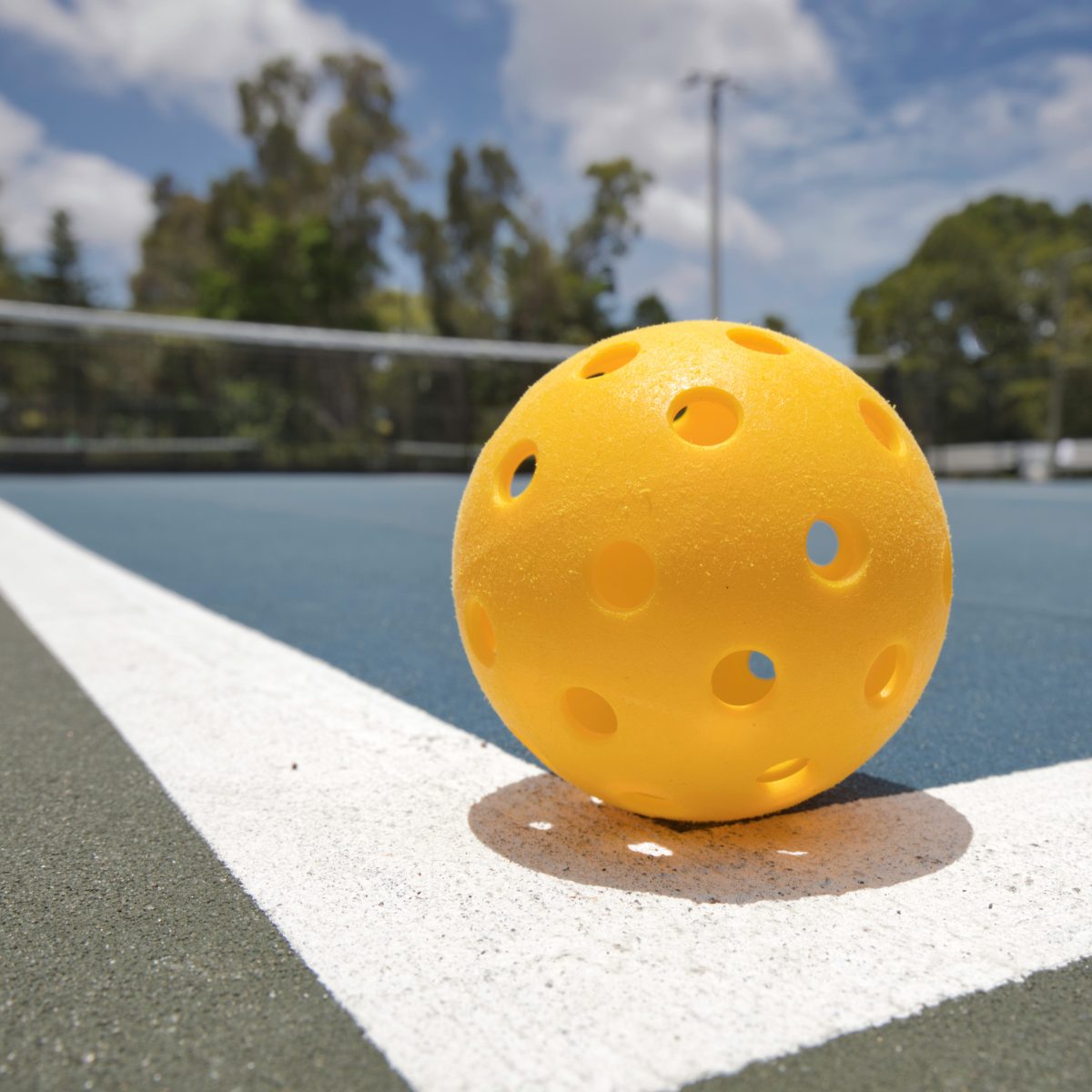
Pickleball Court Dimensions
Pickleball is played on a court that is similar in size to a doubles badminton court. The court measures 20 feet wide and 44 feet long, with a centerline that divides the court into two halves. The court is also divided into two service areas, one on each side of the net. The service area is a 10-foot by 15-foot rectangle centered on the court’s baseline.
The net is 36 inches at the sidelines and 34 inches at the center. The pickleball net extends across the entire court width and is suspended by two poles, one on each side of the court.
The non-volley zone line, also known as the kitchen line, is located 7 feet from the net on both sides of the court. This line marks where players cannot hit the ball while standing inside the zone.
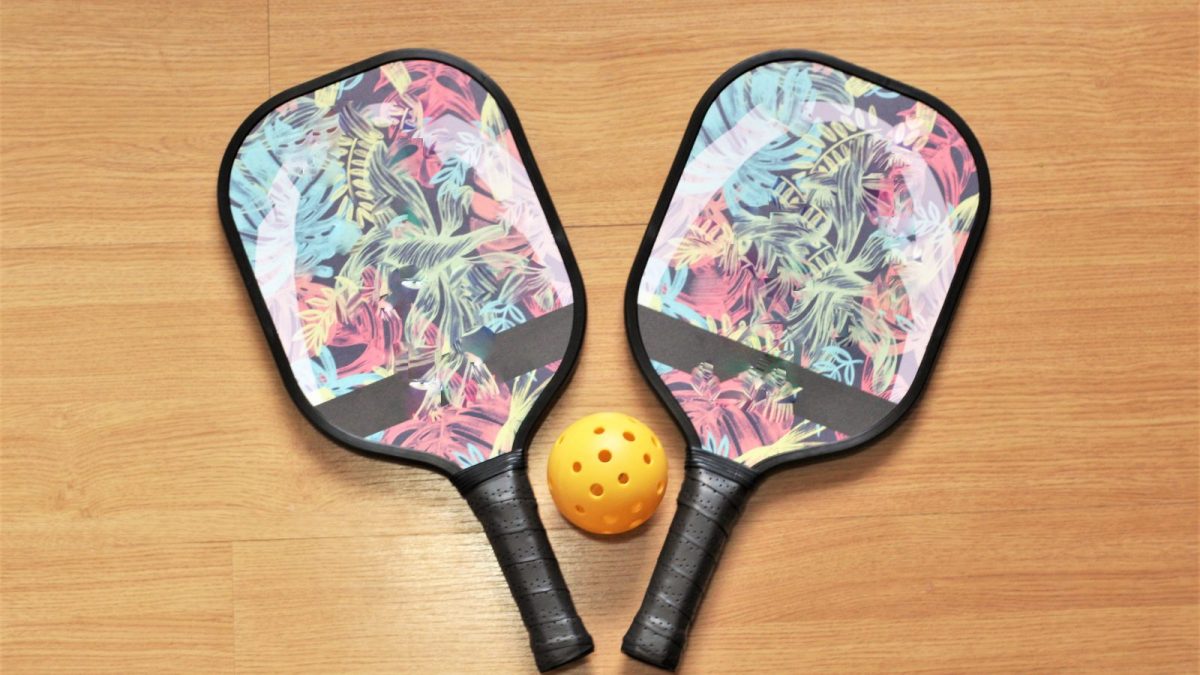
Pickleball Paddle and Pickleball Ball
Pickleball is played with a pickleball paddle and a wiffle ball. The paddle is made of lightweight materials such as wood, composite, or graphite and has a handle and a flat surface. The paddle’s dimensions must not exceed 24 inches in length and 8 inches in width.
The ball used in pickleball is a plastic wiffle ball with holes. The ball’s diameter must be between 2.87 inches and 2.97 inches and weigh between 0.78 ounces and 0.935 ounces. There are indoor pickleballs and outdoor pickleballs that differ by the number and size of the holes in the ball.
Players must wear appropriate footwear with good traction on the court’s surface. It is recommended to wear non-marking court shoes to prevent damage to the court.
Pickleball Rules and Regulations
Players use a paddle and a plastic ball on a court in pickleball. People of all ages can quickly learn and play this game. However, knowing the rules and regulations is essential to play the game.
Pickleball Serve Rules
In pickleball, the serve is always underhand. The serving team must serve from the right-hand side of the court and serve diagonally to the opponent’s court. The serve must land in the opponent’s service court and clear the non-volley zone (the kitchen). A fault is committed if the serve lands outside the opponent’s service court or does not clear the non-volley area.
Pickleball Scoring
The pickleball scoring rules are straightforward. The serving team scores a point when the receiving team commits a fault or violation. The serving team will continue to serve until they commit a fault or violation, at which point, the receiving team will serve. The first team to reach 11 points and have a lead of two points wins the game. The score for pickleball is relatively easy to calculate since the rules are basic and simple to follow.
Faults and Violations
There are several pickleball faults and violations that players must avoid. Some of the most common faults and violations include:
- Double Bounce Rule: The ball must bounce once on each side of the net before players can hit it in the air.
- Non-Volley Zone Rule (kitchen): Players cannot hit the ball in the air while standing in the non-volley zone.
- Let Rule: If the serve hits the pickleball net and lands in the correct service court, it’s a let, and the serve is replayed.
- Out-of-Bounds Rule: If the ball lands outside the court boundaries, it is considered out of bounds.
Players who commit a fault or violation will lose the point, and the opposing team will serve.
It is important to note that the rules and regulations mentioned above are not exhaustive. Review the official rulebook to understand the game’s rules and regulations thoroughly.
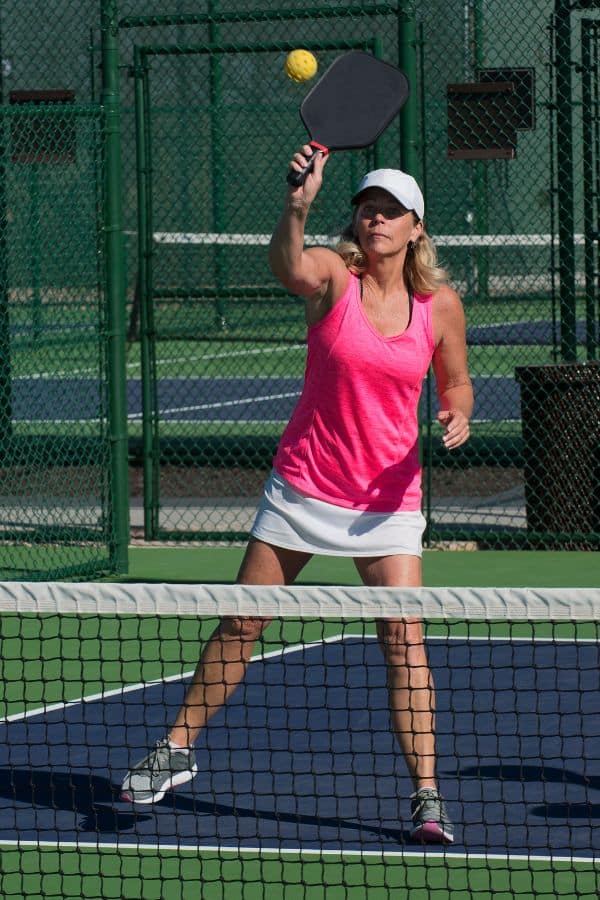
Advanced Pickleball Strategies
Ground Strokes and Smashes
Regarding groundstrokes and smashes in pickleball, the key is to focus on accuracy and power. Keeping your shots low and close to the net is essential, giving your opponent less time to react. Additionally, it would help if you aimed for the corners of the pickleball court, as this will make it more difficult for your opponent to return the ball.
One helpful technique for improving your ground strokes and smashes is to practice hitting the ball with different amounts of spin. This can help you vary your shots’ trajectory and keep your opponent off balance. Another important tip is to use your non-dominant hand to guide the paddle and add extra control to your shots.
Pickleball Kitchen Rules
The kitchen, also known as the non-volley zone, is a crucial court area for advanced pickleball players. You must be comfortable with quick reflexes and precise footwork to succeed in this area. It’s important to stay low and keep your paddle in front of you at all times, as this will give you the best chance of returning your opponent’s shots.
One key strategy for playing in the kitchen is to focus on the pickleball dink shot or hitting soft shots that land just over the net. This can be a highly effective way to control the game’s pace and force your opponent to make mistakes. Another important tip is to stay patient and wait for your opponent to make a mistake before attacking.
Mastering the Pickleball Serve
The pickleball serve is one of the most critical aspects of the game, and mastering it can give you a significant advantage over your opponents. You should focus on developing a consistent motion and hitting the ball with the right amount of power and spin to improve your serve. It’s also important to vary your serve, using different types of spin and placement to keep your opponent off balance.
One helpful technique for improving your serve is to practice hitting targets on the court, such as the corners or the center line. This can help you to develop greater accuracy and control. Another important tip is to stay relaxed and focused, which will help you maintain a consistent motion and avoid making mistakes.
Remember, these advanced strategies require practice and patience to master. By focusing on accuracy, power, and control, you can take your pickleball skills to the next level and become a more competitive player.
Frequently Asked Questions
What are the basic rules of serving in pickleball?
The serving player must stand behind the baseline and serve the ball diagonally to the opponent’s service court. The serve must be underhand and made with the pickleball paddle below the waist. Players must serve the ball into the opponent’s court without touching the net.
What are the ten official rules of pickleball?
- The game starts with a serve.
- Players must serve the ball diagonally across the court.
- Players must serve the ball underhand.
- The server must keep one foot behind the baseline.
- The ball must land in the opponent’s service court.
- The receiving team must let the ball bounce before returning it.
- The ball must stay within the court’s boundaries.
- Players must alternate sides when serving the ball.
- The ball must clear the net and land in bounds.
- The first team to reach 11 points with a two-point advantage wins.
What is an illegal serve in pickleball?
An illegal pickleball serve does not meet the requirements of the basic pickleball serving rules. This includes serving the ball above the waist, failing to serve diagonally, or touching the net with the paddle or ball during the serve.
What is the kitchen in pickleball, and what are the rules regarding it?
The kitchen is the area on the court closest to the net. Players can only enter the kitchen to hit the ball if it has bounced in the kitchen or if they are hitting a ball that has bounced in the kitchen. If a player hits the ball while standing in the kitchen when it has not bounced, it is a fault.
Can you hit a pickleball before it bounces?
Yes and No: in pickleball, the receiving team must let the ball bounce before returning a serve. The “two-bounce” rule requires that both the serving and receiving teams let the ball bounce once after the serve is returned before returning it. Once each team has allowed the ball to bounce to start the rally, the teams may volley until the point has ended.
Is it legal to bounce the ball on a pickleball serve?
Yes, it is legal to bounce the ball on a serve in pickleball. The serve must still meet the basic serving rules, but bouncing the ball before serving can help the server control the speed and placement of the serve.
